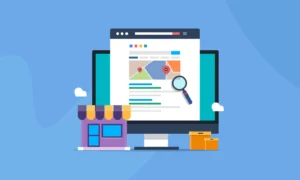With growing competition in all industries, businesses need to break new ground each time to stay firmly in the marketplace. Big data analytics provide the necessary amount of information for experts to make informed decisions. These decisions can help a business make a step forward by accurately identifying a market trend that can possibly increase revenue.
The term “big data” presupposes the continuous increase in the volume, transfer speed, diversity, variability, and complexity of information. This term isn’t limited to data. It implies all the challenges, opportunities, and competencies associated with the storage and analysis of data sets, as well as with making decisions with such accuracy and responsiveness that was impossible to reach before. This approach is called big data decision-making.
The presence of big data in itself won’t solve the major challenges of marketing, but it can help in this process. Its value lies in the ideas obtained on the basis of its analysis, the decisions made and the actions performed.
Thus, let’s look at how businesses can utilize big data to achieve their aims.
1) Customer Segmentation for Personalized Content
Segmenting customers is a simple yet powerful way to leverage data in email marketing. By recording actions, purchases, and customer characteristics, you will understand what content will appeal to everyone.
Message Personalization is the #1 tactic used in email marketing to increase engagement rates. Thus, you can make e-mail a personalized channel of communication with the customer. Don’t send clichéd messages to each of them but customize them to fit all tastes.
For example, a new customer may like an offer with the list of the hottest products, while some other customer may have visited many website pages and checked the prices of products. The latter will require an offer customized to their tastes. The research proved that 80% of consumers are more likely to make a purchase when brands offer personalized experiences.
2) Customer Retention & Customer Loyalty
To acquire a new customer can be five times more costly than to retain an existing one. No wonder companies do their best to increase the loyalty of their customers in every possible way. This is where InData Labs and big data comes in handy.
Analyzing sales will provide you with ideas on what to offer all types of customers. For instance, if a person purchases two out of the three closely connected products from your inventory, the third product is highly likely to be of interest as well. A good use case of this big data policy is Netflix, which saves $1 billion per year on customer retention.
Automatic emails at certain events (on birthday, or when an order is submitted) will also be conducive to loyalty growth. Just don’t consider getting money to be the only purpose of retention. Strive for delivering an amazing customer experience, sending personalized content and personalized offers. This will give more benefits in the long run.
3) Churn Rate Reduction
Customer churn is hard to predict and even harder to prevent. However, big data analytics can provide valuable results in terms of the rate of attrition. Based on the obtained insights and predictive analytics, you’ll be able to see the direction for improvement.
The locus of control can be anything: excellent customer service, attractive offers, effective personalization, rewards, and predicting future behavior. Analyzing big data will help you identify that particular vital aspect to reduce the number of churned customers.
4) Sales Forecasts
Knowledge is power. So, if you study customer buying patterns, you will get actionable and decisive insights. They will enable you to make a sales forecast and make wise data-driven decisions for the company’s future.
Customers’ metrics matter, they can include acquisition cost, average receipt, and customer lifetime value. Armed with this knowledge, you will understand the revenue each new customer will bring in the future. Overlooking these customer metrics may result in ineffective marketing strategies and losses for the business.
5) New Product Development
Predictive analysis refers to the study of data about the past to calculate the likelihood of the future. If you have a huge amount of information, analyzing big data for predicting future patterns can help when introducing a new product or service.
It’s no surprise only a few products bring in most of the profits, while the rest of the products are illiquid. For this reason, expanding the range of products for the offer can be like a game of chance. Although the predictive analysis of big data can’t guarantee success in developing a new product, it will significantly increase your chances of success.
A bright use case for this point is Netflix, which identifies the aspects of a potentially successful movie or TV show based on huge volumes of datasets. It helped Netflix produce “House of Cards” – a successful movie featuring the actors with whose acting viewers were delighted most.
The Takeaway
Analyzing big data has become a staple in maximizing important factors of customer experience. Thus, marketers devoted to utilizing big data are bound to achieve higher peaks in all their different projects and campaigns. The horizons of its potential are truly immense, and the insights from its analysis can overhaul entire marketing strategies.



































